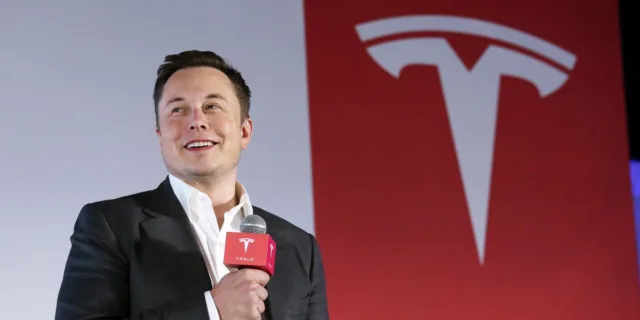Here’s what you’ll learn reading this story.
- With Q1 2025 sales reports now available, we know that Tesla sold 60,000 fewer vehicles than it did last year.
- Tesla isn’t the only automaker experiencing tariff-induced sales difficulties.
- Elon Musk’s company’s grasp on being the top EV maker in the world is slipping, with Chinese company BYD making a strong push.
You’re probably not entirely surprised to hear that Tesla sales have experienced a sharp decline since the start of this year. It’s clear that many Americans weren’t pleased with Elon Musk’s political involvement in Donald Trump’s DOGE initiative, but the catalyst for such a nosedive is likely much more complex. Of course, Tesla isn’t the only automaker struggling with tariff-induced sales difficulties; many automakers are suffering from the same tariff-induced sales slump.
Now that Q1 2025 has drawn to a close, we have a better picture of just how much things have deteriorated at Tesla. According to CNN, the brand sold 384,122 cars in Q1—some 60,000 units fewer than Q1 2024. For context, Dodge is also experiencing troubles after phasing out its gas-powered Challenger sedan, Audi’s EVs are struggling to sell, and even the Toyota Highlander experienced a rough patch.
Increased Competition From China
Tesla is losing its monopoly on key markets like China. Many Chinese brands like BYD, Xiaomi, and many others have already started producing automobiles at similar numbers to Tesla. In fact, BYD is on the verge of dethroning Tesla as the world’s largest EV maker. CNN reports that BYD has already sold 1 million vehicles in the first half of 2025 compared to Tesla’s year-to-date total sales of approximately 721,000.
What’s really incredible is that Xiaomi announced its intentions to start producing automobiles in March of 2021. Its first vehicle, the SU7 sedan, was launched just three years later, in March of 2024. You may have noticed from our previous article on Xiaomi’s YU7 SUV, that the brands vehicles are heavily influenced from existing vehicles like the Porsche Taycan and Ferrari’s Purosangue. And that’s not actually a bad thing, as we think they look brilliant. We haven’t driven either vehicle ourselves, but our friends at Car and Driver recently revealed that Ford Motor Company’s CEO, Jim Farley, daily drives a Xiaomi. And we think that says it all.
What Does It Mean For the Market?
We feel confident that you market watchers—and really anyone—have seen Tesla all over the place in 2025. They nearly doubled following election day, with expectations that the business would flourish during the second Trump administration. Come April, those gains had effectively disappeared, and Tesla was back at square one.
Tesla stock has since stabilized in April after Elon Musk’s announcement that he would be leaving the Trump administration to focus on Tesla—and his other business ventures. His Robotaxi announcement later in the year lifted stocks an estimated 35%, which likely fell back slightly after he revealed they would have a “safety monitor” plopped in the passenger seat. This isn’t the first time Tesla has experienced difficulties and it won’t be the last.
We fully expect them to rebound as we’ve seen time and time again. The only question is how long that will take.
Matt Crisara is a native Austinite who has an unbridled passion for cars and motorsports, both foreign and domestic. He was previously a contributing writer for Motor1 following internships at Circuit Of The Americas F1 Track and Speed City, an Austin radio broadcaster focused on the world of motor racing. He earned a bachelor’s degree from the University of Arizona School of Journalism, where he raced mountain bikes with the University Club Team. When he isn’t working, he enjoys sim-racing, FPV drones, and the great outdoors.










